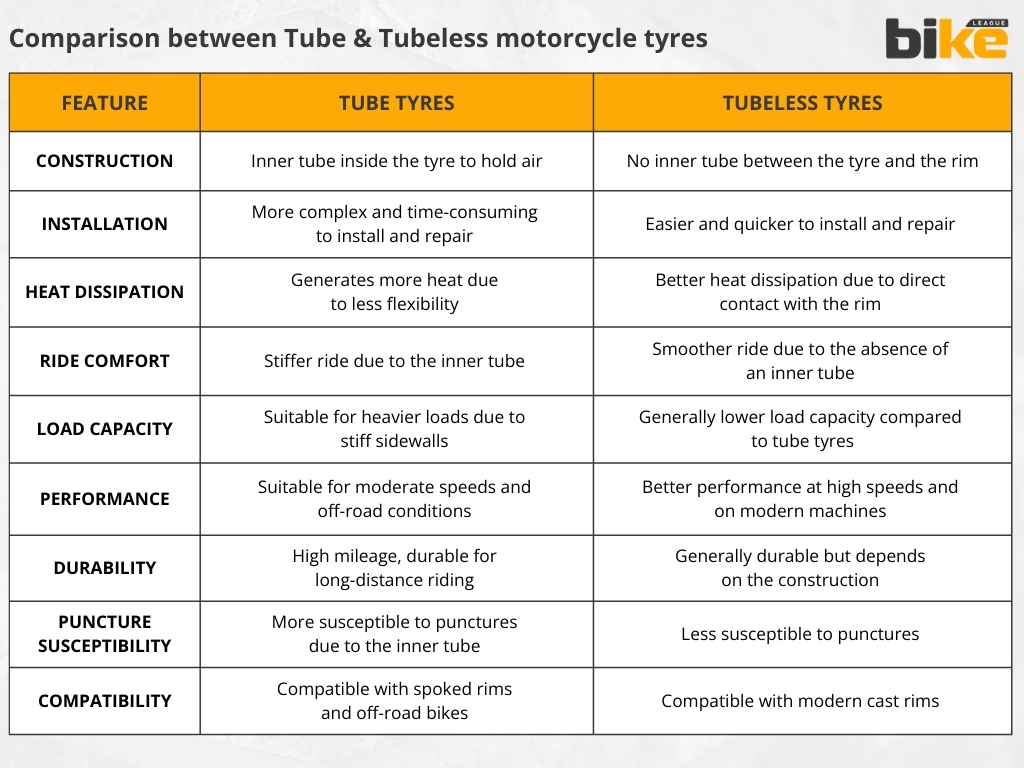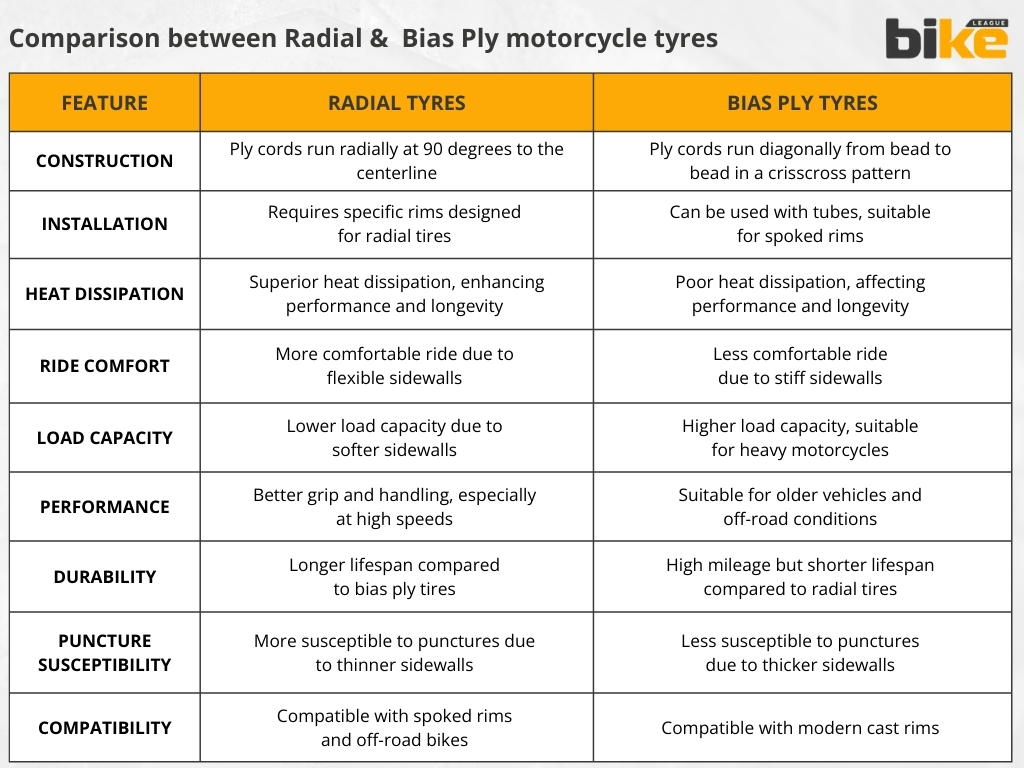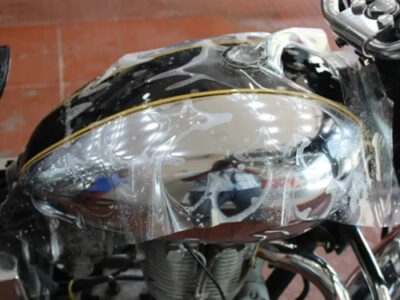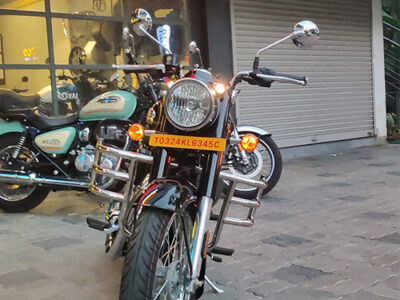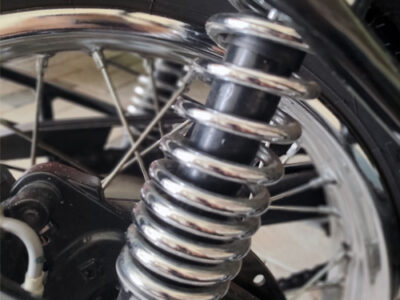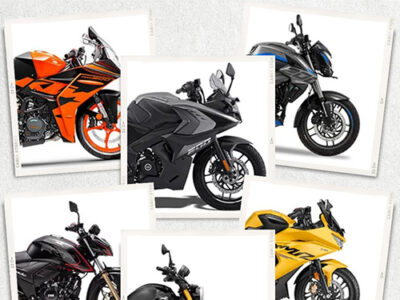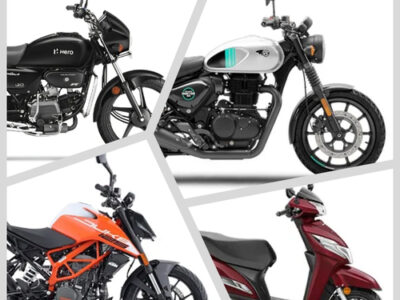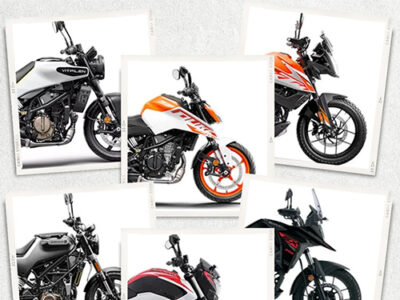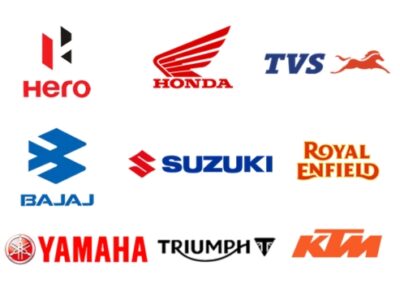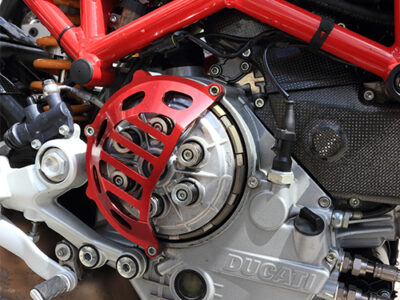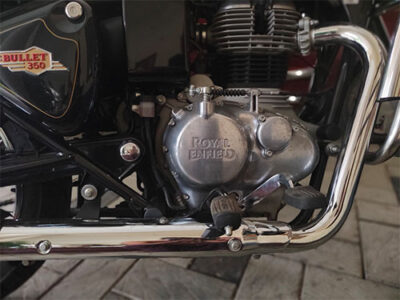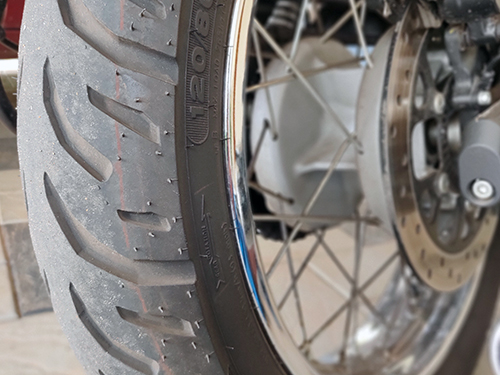
Long story short: What shoes are for our legs is what tyres are for a motorcycle. Tyres are a crucial element that only comes in contact with tarmac while riding.Here we discuss different type of motorcycle tyres like tubeless tyres,radial tyres etc and its pros and cons.
Two-wheeler tyres are a significant component that brings huge safety aspects to the bike. They are the only element that comes in contact with the road—simple. So, with proper tyres, motorcycle braking efficiency and grip will be excellent, and safety threats to the rider will be posed. Times have changed, and most bike riders nowadays are conscious of this, but only a certain percentage is fully aware of it.
Several people in India hesitate to change worn tyres in their motorcycles due to cost factors. But that is the last thing to do in India, where uneven roads and several unexpected circumstances are standard daily. So please always give priority to safety above money. In this article, we will discuss the types of tyres based on the material construction, usage conditions, technical things, and doubts about tyres.
Type of two wheeler tyres based on the material construction
1. Tubeless Tyres
This type of motorcycle tyres are rigid, long-lasting, and constructed of a strong rubber compound. They offer the peace of mind of reduced sudden deflation and the ability to run at lower air pressure for better balance and vehicle stability.
Pros of Tubeless tyres
- Improved air impermeability and resistance to heat and weather.
- Easier to repair and maintain.
- Better fuel efficiency due to lighter weight.
Cons of Tubeless tyres
- Higher initial cost compared to tube-type tyres.
2. Tube-Type Tyres
This type of motorcycle tyres are a more traditional option and more accessible to repair and replace. They are more straightforward in design but more vulnerable to sudden air loss in punctures.
Pros of Tube-type tyres
- Simplicity in design and easier to repair.
- Generally cheaper than tubeless tyres.
Cons of Tube-type tyres
- Vulnerable to sudden air loss in case of punctures.
- Heavier and less fuel-efficient compared to tubeless tyres.
Checkout the comparison between tube and tubeless two-wheeler tyres in the chart given below
3. Bias Ply two wheeler Tyres
This type of motorcycle tyres, also known as diagonal tyres, have a carcass made from layers of ply cord running diagonally to the centre line of the tread. These body cords run from bead to bead in alternating layers, creating a crisscross pattern.
Advantages of Bias Ply Tyres
- Load Capacity: Bias ply tyres have very stiff sidewalls, making them suitable for heavier motorcycles or bikes carrying heavier loads. This rigidity allows them to carry greater weight and perform well under heavy loads.
- High Mileage: These tyres are known for their high mileage capabilities, making them a durable option for long-distance riding.
- Compatibility with Tubes: Bias ply tyres can be used with tubes, which is necessary for spoked rims and off-road riding.
Disadvantages of Bias Ply Tyres
- Heat Dissipation: One of the main downsides is their poor heat dissipation, which can affect performance and longevity.
- Ride Comfort: While beneficial for load capacity, the stiff sidewalls can result in a less comfortable ride than radial tyres.
4. Radial Tyres
This type of motorcycle tyres have a different construction where the ply cords radiate at 90-degree angles to the centre line of the tread. The body cords run directly from bead to bead, allowing for a more flexible sidewall than other type of tyres.
Advantages of Radial Tyres
- Heat Dissipation: Radial tyres dissipate heat better due to their construction, which includes steel belts that help manage heat more effectively.
- Ride Comfort: The thinner and more flexible sidewalls act as a ‘spring,’ absorbing bumps and providing a smoother ride.
- Performance: Radial tyres offer better grip, especially when leaning into corners, and are suitable for high-speed, sporty purposes. They are essential for more powerful motorcycles with rigid chassis.
Disadvantages of Radial Tyres
- Puncture Susceptibility: The thinner sidewalls are more susceptible to punctures while providing comfort.
- Load Capacity: Radial tyres generally have a lower load capacity compared to bias ply tyres due to their softer sidewalls.
Differences Between Bias Ply and Radial two wheeler Tyres
- Construction: Bias ply motorcycle tyres have diagonal ply cords, while radial tyres have ply cords that run radially.
- Sidewall Rigidity: Bias ply tyres have stiffer sidewalls, making them better for heavy loads, whereas radial tyres have softer sidewalls, providing a smoother ride.
- Heat Management: Radial tyres dissipate heat better, which enhances performance and longevity, especially at high speeds.
- Application: Bias ply tyres are suitable for moderate speeds and heavier loads, often used in touring and off-road motorcycles. Radial tyres are preferred for high-performance, sporty motorcycles due to their superior grip and handling.
Checkout the comparison between bias ply and radial two-wheeler tyres in the chart given below
Types of two wheeler tyres based on usage conditions
1. Street Tyres
Street motorcycle tyres are designed primarily for durability and reliability on paved roads. They typically have smooth tread patterns with diagonal grooves to channel water away, preventing hydroplaning.
Pros of Street Tyres
- Long durability and reliability
- Better grip on wet surfaces due to more treads
Cons of Street Tyres
- Limited performance on off-road terrains
2. Dual Sport or ADV Tyres
Dual-sport or adventure (ADV) tyres are built for riders who frequently switch between on-road and off-road terrains. Their unique tread pattern provides traction on both surfaces.
Pros of Dual Sport or ADV Tyres
- Versatile, suitable for both on-road and off-road use
- Good traction on slick and muddy terrains
Cons of Dual Sport or ADV Tyres
- May not offer the best performance on either surface compared to specialized tyres
3. Touring Tyres
Touring tyres are heavy-duty tyres with deep tread patterns designed to effectively dispel water. They are made from more complex rubber compounds to ensure excellent durability and suit highway long-distance touring.
Pros of Touring Tyres
- Excellent water dispersion, reducing the risk of hydroplaning
- Long mileage and good traction in wet conditions
Cons of Touring Tyres
- Heavier and may not provide the same level of grip as sport tyres
4. Sport / Performance Tyres
Sport or performance tyres offer the highest possible grip and performance in dry conditions. They are designed for street-legal motorcycles that require excellent handling and high-speed stability.
Pros of Sport / Performance Tyres
- Superior grip and handling at high speeds
- Lightweight and superb handling
Cons of Sport / Performance Tyres
- Faster wear and tear due to softer rubber compounds
- Not ideal for wet or off-road conditions
5. Sport Touring Tyres
Sport touring tyres are a hybrid between sport and touring tyres. They provide performance and grip close to sport tyres while offering enhanced durability and ruggedness for longer rides.
Pros of Sport Touring Tyres
- Balanced performance and durability
- Suitable for long rides with good traction and mileage
Cons of Sport Touring Tyres
- May not excel in either sport or touring performance compared to specialized tyres
6. Off-Road Tyres
Off-road tyres feature knobby, deep treads for maximum grip on loose dirt, mud, sand, or gravel. These tyres are less stable on paved surfaces but excel in off-road conditions.
Pros of Off-Road Tyres
- Excellent traction on unpaved terrains
- Designed to handle tough and rough conditions
Cons of Off-Road Tyres
- Unstable and noisy on paved roads
7. Racing Tyres / Slicks
This type of motorcycle tyres , also known as slicks, provide the ultimate grip and are used exclusively for professional motorcycle racing. These tyres have a smooth surface with no tread, maximizing the contact patch with the road for superior traction.
Pros of Racing Tyres / Slicks
- Maximum grip and performance on race tracks
- Can handle high speeds, rapid acceleration, and quick turns
Cons of Racing Tyres / Slicks
- Not suitable for everyday use or wet conditions
- High wear rate and limited lifespan
FAQ related to different types of two wheeler tyres
1. What are the main types of two-wheeler tyres available in India?
Two-wheeler tyres can be broadly classified into tubeless and tube-type tyres. Tubeless tyres are preferred because they better maintain air pressure and provide a smoother ride. In contrast, tube-type tyres are more traditional and often used in older models.
2. What are the different two-wheeler tyre constructions available?
Tyres can be constructed as radial or bias (cross-ply). Radial tyres offer better performance at high speeds. They are cooler during long rides, while bias tyres are more durable and suitable for heavy loads.
3. What are the different rubber compounds used in tyres?
Tyres are made from rubber compounds such as soft, medium, hard, and dual. Soft compound tyres provide better grip but wear out faster, while hard compound tyres last longer but offer less traction. Dual compound tyres combine the benefits of both.
4. Which type of motorcycle tyres is the best one?
It all depends upon the user’s preference. We recommend tubeless tyres instead of tube tyres as tubeless tyres offer more safety. All other tyre options depend on road type and riding environment.
5. Which one is better, the bias ply tyre or the radial tyre?
It purely depends upon ride conditions and user preferences.
6. Is tyre size an essential factor when choosing two wheeler tyres?
Yes, skinny tyres offer more mileage and longevity and are less expensive. At the same time, wider tyres bring in more traction and grip and improve handling at the expense of mileage drop and less longevity. Always stick to the tyre size mentioned in the owner’s manual; otherwise, it will affect the whole performance and ergonomics of the motorcycle.
7. What is the tread pattern in two wheeler tyres?
Tread refers to the rubber surface on the tyre that makes contact with the road. A tread pattern is the tyre design comprising channels and grooves to dissipate water away from the contact patch. Without a tread pattern, a tyre cannot be used in wet conditions and is prone to excess slipping and loss of control. Tyre tread patterns differ among tyre types used for various road conditions.
Other related articles from Bikeleague India
- Adventure bikes vs Touring bikes which one is the best
- Bike Tyre Polish in India
- Two wheeler tyre code – How to read & understand – video
- Top 5 most expensive bikes in India
- What is Nitrogen & air filling in bikes? – Doubts & FAQ
Conclusion
In this article, we have discussed types of two-wheeler tyres based upon different criteria and questions and answers related to the same. If you have any other questions or queries, email us at bikeleague2017@gmail.com. You can also share your doubts or opinions in the comments section below. We are always eager to help and assist you. Also, here are several social media platforms of Bikeleague India to raise your suspicions.

